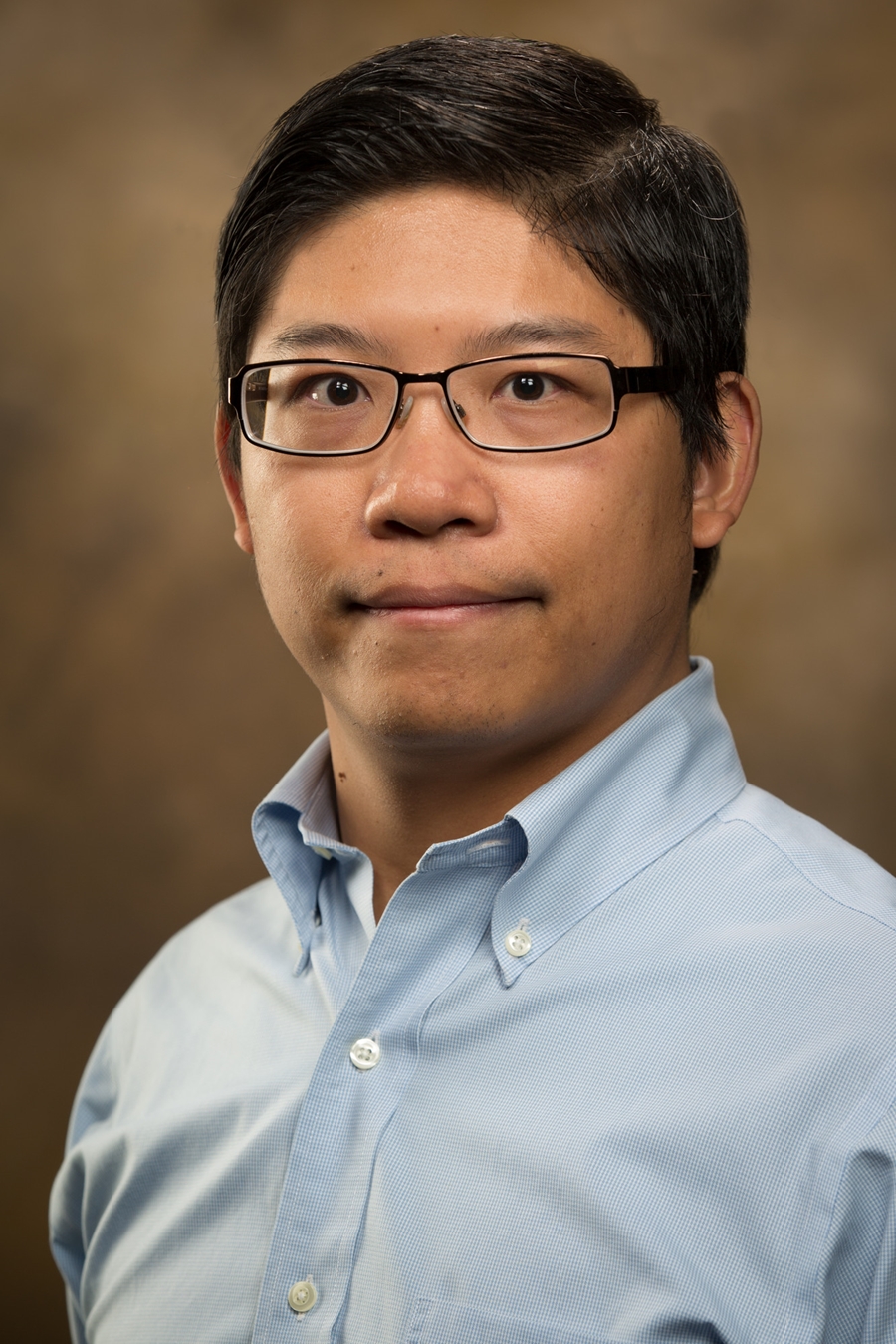New Method Facilitates Study of the Effects of Chemicals on DNA
FAYETTEVILLE, Ark. – University of Arkansas physics researchers have developed a simple, cost-effective method to study the effects of chemicals on DNA which has potential to improve the development and testing of life-saving treatments.
Jack Freeland, an honors physics student in his junior year, worked with Yong Wang, assistant professor of physics, and Prabhat Khadaka, a post doctoral fellow, to create bent strands of DNA using a technique developed by Wang and colleagues at the University of California Los Angeles, where Wang was a doctoral student.
By bending strands of DNA, the researchers can amplify the effects of chemical interactions so that the effects can be observed more easily. Their study, which demonstrated the concept using magnesium and silver ions, was recently published in the journal Physical Review E, and the researchers have filed for a patent for their method.
In the study, the researchers demonstrated that their method could be used to observe interactions of DNA with metal ions using gel electrophoresis, a routine technique available in most chemistry and biochemistry labs.
This provides an alternative to other methods of studying DNA interactions, which are less sensitive or require expensive equipment. DNA has a double helix structure that is formed from two strands of paired molecules, or bases. The researchers created their amplifiers from two single strands of synthesized DNA, one with 45 bases and one with 30, so one is longer than the other. The bases of the two strands pair up so the ends of the longer strand bend toward the middle of the shorter strand to form a circular construction.
The bending that results from this construction places stress on the molecular bonds. Because the bonds are stressed, the effects of the metal ions are easier to observe. The researchers tested their amplifiers using magnesium ions, which are known to have a stabilizing effect on DNA, and silver ions, which are known to damage DNA.
When the bent DNA was exposed to magnesium ions, the researchers could observe that the stabilizing effect of the ions promoted the release of energy in the bent DNA, straightening them.
When the researchers exposed the bent DNA to silver ions, they observed that the presence of silver ions affected the ability of the DNA bases to pair up, an effect that was too small to be observed on non-bent strands of DNA.
“In addition to metal ions, it is likely that our bent DNA amplifiers can be used to investigate the interactions of DNA with other chemicals, including organic molecules and reagents,” the researchers said in the paper. “In principle, it is even possible to develop our method into a convenient technique for screening DNA-targeting drugs.”
This work was supported by the University of Arkansas, the Arkansas Biosciences Institute and the National Science Foundation. Jack Freeland has an Honors College Research Grant.
About the J. William Fulbright College of Arts and Sciences: Fulbright College is the largest and most academically diverse unit on campus with 19 departments and more than 30 academic programs and research centers. The college provides the core curriculum for all University of Arkansas students and is named for J. William Fulbright, former university president and longtime U.S. senator.
About the University of Arkansas: The University of Arkansas provides an internationally competitive education for undergraduate and graduate students in more than 200 academic programs. The university contributes new knowledge, economic development, basic and applied research, and creative activity while also providing service to academic and professional disciplines. The Carnegie Foundation classifies the University of Arkansas among only 2 percent of universities in America that have the highest level of research activity. U.S. News & World Report ranks the University of Arkansas among its top American public research universities. Founded in 1871, the University of Arkansas comprises 10 colleges and schools and maintains a low student-to-faculty ratio that promotes personal attention and close mentoring.
Topics
Contacts
Yong Wang, Assistant Professor of Physics
J. William Fulbright College of Arts and Sciences
479-575-4313,
yongwang@uark.edu
Camilla Shumaker, director of science and research communications
University Relations
479-575-7422,
camillas@uark.edu
Headlines
PetSmart CEO J.K. Symancyk to Speak at Walton College Commencement
J.K. Symancyk is an alumnus of the Sam M. Walton College of Business and serves on the Dean’s Executive Advisory Board.
Faulkner Center, Arkansas PBS Partner to Screen Documentary 'Gospel'
The Faulkner Performing Arts Center will host a screening of Gospel, a documentary exploring the origin of Black spirituality through sermon and song, in partnership with Arkansas PBS at 7:30 p.m. Thursday, May 2.
UAPD Officers Mills and Edwards Honored With New Roles
Veterans of the U of A Police Department, Matt Mills has been promoted to assistant chief, and Crandall Edwards has been promoted to administrative captain.
Community Design Center's Greenway Urbanism Project Wins LIV Hospitality Design Award
"Greenway Urbanism" is one of six urban strategies proposed under the Framework Plan for Cherokee Village, a project that received funding through an Our Town grant from the National Endowment for the Arts.
Spring Bike Drive Refurbishes Old Bikes for New Students
All donated bikes will be given to Pedal It Forward, a local nonprofit that will refurbish your bike and return it to the U of A campus to be gifted to a student in need. Hundreds of students have already benefited.





